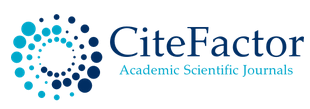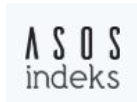Examination of Prospective Science Teachers' Cognitive Structures and Visual Images Towards the Laboratory Concept: A Mixed Methods Research
FEN BİLGİSİ ÖĞRETMEN ADAYLARININ LABORATUVAR KAVRAMINA YÖNELİK
DOI:
https://doi.org/10.15659/jancr.v8i2.182Keywords:
: Laboratory, prospective science teacher, cognitive structure, visual imageAbstract
The aim of this study is to examine the cognitive structures and visual images of prospective science teachers towards the laboratory concept. The study group consists of 80 prospective science teachers enrolled in a state university during the 2023-2024 academic year. A convergent parallel mixed methods design was used in this study. Quantitative data were collected through the "Science Laboratory Attitude" scale. In contrast, qualitative data were collected through an open-ended question related to the "laboratory" concept, a word association test, and student drawings. Quantitative data were analyzed using the SPSS statistical program, while qualitative data were analyzed through content analysis. As a result of the research, it is observed that there is no significant difference in the attitudes of prospective science teachers towards the science laboratory based on gender and the variable of following a scientific journal; however, a significant difference in favor of first grades is seen according to the class level. According to the results of qualitative data, the responses of prospective science teachers to the open-ended question about the "laboratory" concept were categorized into five categories. Students mainly described the laboratory concept with the concepts of experiment (n=51) and scientific study (n=16). The responses to the word association test related to the "laboratory" concept were categorized into six categories. While students mostly associated the laboratory concept with glass materials (n=76) and experiment (n=57) words, they associated it with minor feelings (n=9). When the drawings related to the "laboratory" concept were examined, they were categorized into seven categories. Most glass experiment materials (n=130) and laboratory items (n=80) are in the teacher candidates' drawings.
References
- Abrahams, I., & Millar, R. (2008). Does practical work really work? A study of the effectiveness of practical work as a teaching and learning method in school science. International Journal of Science Education, 30(14), 1945-1969.
- Başaran, İ. E., Özden, Y., Yavuz, A., & Yurdakul, E. (2016). İlköğretim fen bilimleri laboratuvarı etkinlikleri: Görüşlere dayalı bir örnek. International Journal of New Trends in Arts, Sports & Science Education, 5(1), 1-7.
- Böyük, U., Demir, S., & Erol, M. (2010). Fen ve Teknoloji ders öğretmenlerinin laboratuvar araştırmalarına yönelik yeterlik görüşlerinin farklı değişkenlere göre incelenmesi. Türk Bilim Araştırma Dergisi, 3(4), 342-349.
- Büyüköztürk, Ş. (2011). Deneysel desenler. (Experimental patterns). (3. baskı). Ankara: Pegem Akademi.
- Can, Ş. (2012). Fen bilgisi öğretmen adaylarının laboratuar uygulamalarına yönelik düşüncelerinin cinsiyet, öğretim türü, sınıf düzeyi ve lise laboratuvar deneyimleri açısından araştırılması. Türk Fen Eğitimi Dergisi, 9(1), 3-12.
- Cansever, S. (2022). Fen eğitiminde laboratuvar destekli öğretimin öğrencilerin akademik başarı, tutum ve bilimsel süreç becerilerine etkisi. Yayınlanmamış yüksek lisans tezi, Sivas Cumhuriyet Üniversitesi, Eğitim Bilimleri Enstitüsü, Sivas.
- Creswell, J. W., & Plano Clark, V. L. (2007). Designing and conducting mixed methods research. Thousand Oaks, CA: Sage.
- Çakmak, M. (2008). Fen Bilgisi öğretmen adaylarının laboratuar tutumları ile fen bilgisine yönelik tutumları arasındaki ilişkinin değerlendirilmesi. Yayınlanmamış yüksek lisans tezi, Kafkas Üniversitesi Fen Bilimleri Enstitüsü, Kars.
- Dilber, R., Sönmez, E., Doğan, S., & Sezek, F. (2006). Fizik bölümü öğrencilerinin laboratuarlara karşı tutumlarının değerlendirilmesi ve karşılaştıkları sorunların tespit edilmesi üzerine bir çalışma. Çukurova Üniversitesi Eğitim Fakültesi Dergisi, 1(31), 102-109.
- Dobson, J. L., & Meyer, A. M. (2016). Investigating the relationship between student critical thinking and the ınstructional use of peer and self-assessment. The Journal of Effective Teaching, 16(3), 58-75.
- Ekici, G. (16-18 Eylül 2002). Biyoloji öğretmenlerinin laboratuvar dersine yönelik tutumlarının farklı değişkenler açısından incelenmesi. V. Ulusal Fen Bilimleri ve Matematik Eğitimi Kongresi, ODTÜ, Ankara.
- Gibbs, G. (2013). Learning by doing: A guide to teaching and learning methods. Oxford Centre for Staff and Learning Development.
- Hofstein, A., Ben-Zvi, R., & Samuel, D. (1976). The Measurement of the Interest in, and Attitudes to Laboratory Work Amongst Israeli High School Chemistry Students. International Journal of Science Education, 60(3), 401-411.
- Hofstein, A., & Lunetta, V. N. (1982). The role of the laboratory in science teaching: Neglected aspects of research. Review of Educational Research, 52(2), 201-217.
- Hofstein, A., & Lunetta, V. N. (2004). The laboratory in science education: Foundations for the twenty-first century. Science Education, 88(1), 28-54.
- Kara, U. (2010). Öğretmen adaylarının bilime yönelik kavram yanılgılarının giderilmesinde bilim tarihi temelli bilim öğretiminin yönteminin etkililiği, Yayımlanmamış yüksek lisans tezi, Ondokuzmayıs Üniversitesi, Sosyal Bilimler Enstitüsü İlköğretim Anabilim Dalı, Samsun.
- King, A. (1994). Guiding Knowledge Construction in the Classroom: Effects of Teaching Children How to Question and How to Explain. Educational Psychology Review, 6(3), 225-261.
- Kavlak, E. E., & Birhanlı, A. (2023). Fen Bilimleri öğretmenlerinin covid-19 uzaktan eğitim sürecinde sanal laboratuvar uygulamaları hakkındaki görüşlerinin incelenmesi. Sosyal Bilimler Dergisi, 9(2), 26-37.
- Lunetta, V. N. (1998). The school science laboratory: Historical perspectives and contexts for contemporary teaching. In B. J. Fraser & K. G. Tobin (Eds.), International Handbook of Science Education (pp. 249-262). Springer.
- Millar, R., & Abrahams, I. (2009). Science learning in school laboratories. In J. Gilbert & D. Treagust (Eds.), Multiple representations in chemical education (pp. 485-515). Springer.
- Özdemir, M., & Azar, A. (6-9 Temmuz 2004). Fen öğretmenlerinin laboratuvar derslerine yönelik tutumları. XIII. Ulusal Eğitim Bilimleri Kurultayı, İnönü Üniversitesi Eğitim Fakültesi, Malatya.
- Shavelson, R. J. (1974). Methods for examining representations of A subject‐matter structure in a student's memory. Journal of Research in Science Teaching, 11(3), 231-249.
- Sürücü, A., Özdemir, H., Bilen, K., & Köse, S. (2013). Fen Bilgisi öğretmen adaylarının laboratuvara yönelik tutumları. The Journal of Academic Social Science Studies, 6(2), 843-852.
- Tabachnick, B. G., & Fidell, L. S. (2001). Using multivariate statistics (Fourth edition). New York: Harper Collins Publishers.
- Taşlıdere, E., & Korur, F. (2012). Fen ve Teknoloji öğretmen adaylarının fizik laboratuvarına yönelik tutumları: Mehmet akif ersoy üniversitesi örneği. Mehmet Akif Ersoy Üniversitesi Eğitim Fakültesi Dergisi, 12(23), 295-318.
- Tuan, H. L., Chin, C. C., & Shieh, S. H. (2005). The development of a questionnaire to measure students’ motivation towards science learning. International Journal of Science Education, 27(6), 639-654.
- Windschitl, M., Thompson, J., & Braaten, M. (2008). Beyond the scientific method: Model-based inquiry as a new paradigm of preference for school science investigations. Science Education, 92(5), 941-967.
- Yalvaç, B., & Sungur, S. (2000). Fen Bilgisi öğretmen adaylarının laboratuar derslerine karşı tutumlarının incelenmesi. Dokuz Eylül Üniversitesi Eğitim Fakültesi Dergisi, 12, 44-56.
- Yücel, E. (2014). Fen Bilgisi öğretmen adaylarının laboratuvar derslerine yönelik özyeterlik, tutum ve kaygı puanlarının bazı değişkenlere göre incelenmesi. Yayımlanmamış yüksek lisans tezi, Sakarya Üniversitesi, Eğitim Bilimleri Enstitüsü, Sakarya.
Downloads
Published
How to Cite
Issue
Section
License
Copyright (c) 2024 Journal of Anatolian Cultural Research (JANCR)

This work is licensed under a Creative Commons Attribution-NonCommercial 4.0 International License.










